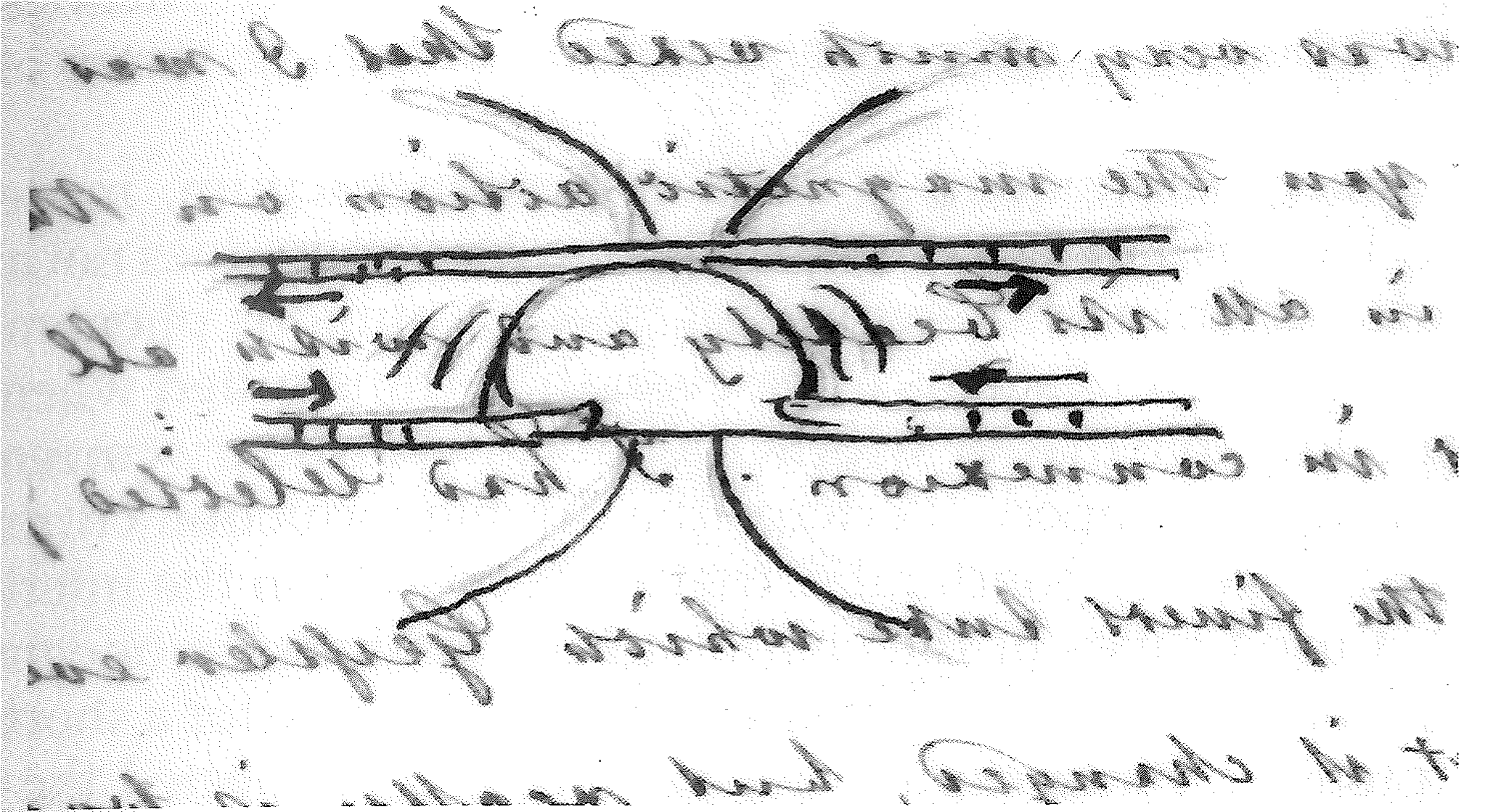Julius Plücker to Faraday 28 May 1858
My dear Sir!
At first my most sincere thank for all your kindness to me during my last stay in London1. I never will forget the heartty reception I received, without any exception.
I was very much vexed that I was not able to show you the magnetic action on the electric current in all its beauty and with all the singular facts in connexion. I had selected for this purpose the finest tube which Geissler ever made; I thought it changed, but really it was broken by Geissler when put into the box and exchanged by an ordinary one of a similar shape. Thus I was able only to give a general idea of the curious phenomenon.

Being returned home I was most anxious to examine the induction current within the tube, I am indebted for to Mr Gassiots kindness. There is indeed between the two tin covers a double current of equal intensity and opposite direction, as indicated already by Mr. Gassiots experiment. When put equatorially between the two iron pieces one of the two currents is thrown upwards, the other one downwards; over a single pole the two currents, separated by the Magnet, are deflected within the horizontal plane. When put axially upon the two iron pieces, the two currents, obliged by the Magnet to cross each other, present a beautifull phenomenon difficult to be reproduced by a drawing. When the tube is put in an oblique direction upon the iron pieces I got two separated bright spirals, the one dextrorsum, the other one sinistrorsum. In some distance from the Magnet (when the action on both spirals is less different) we get two similar spirals; the lower one is interrupted, when the tube touches the iron pieces.
It was quite unexpected to me, to get essentially the same double current, when I connected one of the wires of Ruhmkorff’s coil with the platina wire of the tube, the other one with the tin cover.

The double induction current exhibits a variety of phenomena when provoked in tubes of a different shape and containing traces of different gazes.-
After closer examination of the Torricellian vacuum, made with the greatest care, I am persuaded now that our best vacuum does not at all transmit an electric current and therefore not offer a luminous phenomenon. The double induction current seems to be even than transmitted when, for want of sufficient ponderable matter within the tube, the ordinary current between the platina wires is stopped. (Perhaps the double induction current may be transmitted by traces of ponderable matter deposited in the interior surface of the tube). I used tubes of the shape of Mr. Gassiot’s. In one instance the double induction current having passed though the tube for a short time with a constant intensity, I interrupted the current, and connected the two wires of Ruhmkorff’s coil to the two platina wires in the extremities of the tube; I was struck to get a very bright ordinary electric discharge which did not exist before; but, after some time the discharge became an interrupted one and finally entirely stopped. This experiment may be repeated as often as you like. In order to verify the general law, according to which to the same colour corresponds the same refrangibility of rays, in the case of electric spectra produced in different most dilated gazes, I conducted the discharge of Ruhmkorff’s coil though a double tube of this form.
 The two narrow tubes A, B, forming one straight line were connected to a platina wire c. One of the tubes contained traces of carbonic acid, the other one of hydrogene. Whatever might be the difference between the two spectra, the deflexion of the same colour in both spectra was the same. The strange appearances of the spectra are partly produced by contrast; I think also that some effect is to be attributed to fluorescent light.
The two narrow tubes A, B, forming one straight line were connected to a platina wire c. One of the tubes contained traces of carbonic acid, the other one of hydrogene. Whatever might be the difference between the two spectra, the deflexion of the same colour in both spectra was the same. The strange appearances of the spectra are partly produced by contrast; I think also that some effect is to be attributed to fluorescent light.
There is, I think, no doubt that the blue colour in English tubes, corresponding to the green one in ours, is produced by i<line>mixed lead. I procured German glass, containing lead: tubes made of it gave a most intensive blue colour.

Lately I got a new case of magnetic light. Putting a tube of the shape A, in the equatorial position, with one of its narrow parts between the two poles, its larger middle part touching laterally the two iron pieces, I observed in the horizontal plane a fine magnetic luminous arch (a) completely seperated from the electric current. The two extremities of the arch touched the interior surface of the glass, as the magnetic arches do, which pass through the negative electrode. But in the new case the arch in the midst of the tube is not at all directed by any conducting wire.
You would oblige me very much, Sir, by communicating my observations, as you did in a former case, to Mr. Gassiot and also to Mr. Tyndall, who kindly intends to give an abstract2 of my papers, (the third3 did not yet appear) in the Philosophical Magazine.
I beg you, dear Sir, to present my respects to Mad. Faraday, and to Rvd. John Barlow, the amiable Secretary of Royal Institution.
Ever yours | Plücker
Bonn | 28th May 1858.
Please cite as “Faraday3447,” in Ɛpsilon: The Michael Faraday Collection accessed on